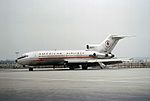St. Aloysius on the Ohio
1868 establishments in OhioChurches completed in 1888Educational institutions established in 1868National Register of Historic Places in Hamilton County, OhioRoman Catholic churches in Cincinnati

Saint Aloysius on the Ohio (locally known as St. Al's) is a Roman Catholic parish in the Sayler Park neighborhood of Cincinnati, Ohio, United States. The parish is part of the Archdiocese of Cincinnati. It is named after St. Aloysius Gonzaga and located near the Ohio River.
Excerpt from the Wikipedia article St. Aloysius on the Ohio (License: CC BY-SA 3.0, Authors, Images).St. Aloysius on the Ohio
Whipple Street, Cincinnati Sayler Park
Geographical coordinates (GPS) Address Website External links Nearby Places Show on map
Geographical coordinates (GPS)
| Latitude | Longitude |
|---|---|
| N 39.105277777778 ° | E -84.684444444444 ° |
Address
Saint Aloysius on the Ohio Church (Saint Aloysius Church;Saint Aloysius-on-the-Ohio Church)
Whipple Street
45233 Cincinnati, Sayler Park
Ohio, United States
Open on Google Maps








